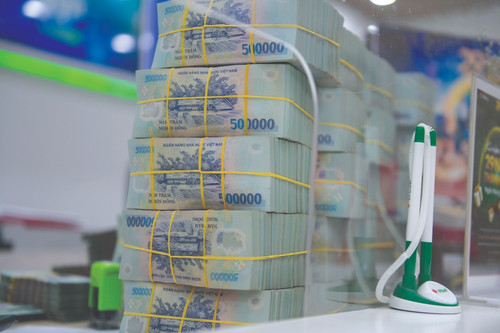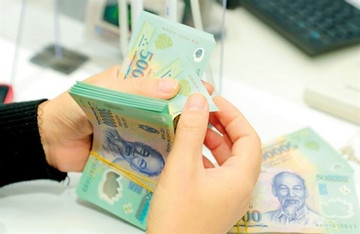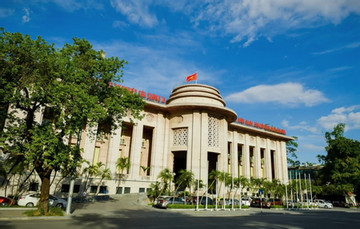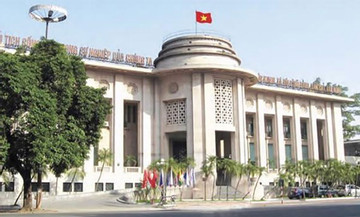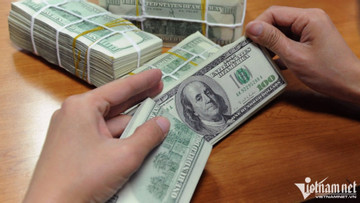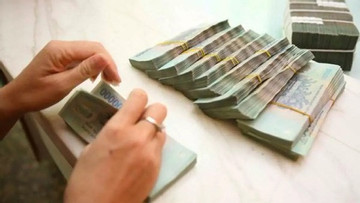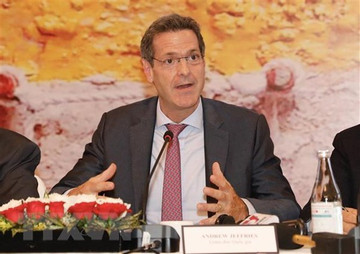- © Copyright of Vietnamnet Global.
- Tel: 024 3772 7988 Fax: (024) 37722734
- Email: evnn@vietnamnet.vn
monetary policy
Update news monetary policy
A fiscal expansion
A solution to economic growth that the Government has doubled down on is to spur public investment, with major infrastructure projects given a focus. Such efforts have yet to pay off. What is the problem?
Vietnam’s banking system shows signs of money surplus
Vietnam’s banking system is showing signs of returning to a period of money surplus as no bank needs the State Bank of Vietnam's (SBV) capital in the open market operation (OMO) channel and overnight interbank interest rates have dropped sharply.
State Bank of VN works to increase attractiveness of holding domestic currency
The State Bank of Vietnam (SBV) has withdrawn a significant amount of money out of the banking system with an aim to increase the interest rate of the Vietnamese dong.
VN State Bank withdraws money from market ahead of Fed meet
Vietnam’s central bank net withdrew over VND30 trillion from the market last week as the banking system saw surplus liquidity due to slow credit growth.
Vietnam responds well to global changes in 2022
2022 has been a year of uncertainty for the world, including Vietnam. However, flexible policies applied by Vietnam have helped it stabilize the exchange rate and inflation rate.
Finding the balance between growth and inflation
Prime Minister Pham Minh Chinh has released a special message for monetary policy in 2023, when the economy is expected to face challenges.
The bugbear called ‘inflation’
Earlier this year, many experts said inflation in Vietnam would increase as a result of global inflation, disruption of supply chains, fuel price increases and other factors.
Public investment engine of growth for 2023
Total public investment to be delivered in 2023 is expected to top VND730 trillion ($31 billion), higher than the realised figure of VND540 trillion in 2022.
Loosening monetary policy welcome amid credit crunch
The SBV last week raised the 2022 credit growth target for the domestic banking system by 1.5-2 percentage points from its previous target of 14 per cent, allowing commercial banks to pump an additional VND240 trillion into the economy.
SBV adjustments calm liquidity of currency
While the problem of the VND’s liquidity has been stabilised, the economy is still facing challenges regarding macro-stability and exchange and interest rate pressure, according to financial experts.
Policy space for forex control
Though the monetary regulator has taken intervention measures, the pressure on the forex market remains high.
Fiscal policy needs to ‘share fire’ with monetary policy
Some friends of mine asked me the other day if they should buy USD to hoard after the forex trading band was raised by the State Bank of Vietnam (SBV) to 5 percent. In the black market, of course.
Unblocking capital sources for the economy
After the recent increase in credit limit, the State Bank of Vietnam (SBV) has granted 13.6 percent of the total 14 percent credit room in 2022.
USD surges to VND24,000, US$1.7 billion withdrawn from circulation
The State Bank of Vietnam (SBV) withdrew nearly VND41 trillion ($1.7 billion) through open market operations as the US dollar rose to over VND24,000 on September 26-30, 2022.
Current monetary policy quite suitable
Many people are concerned whether the country will face a tighter monetary policy and higher exchange and interest rates in the near future.
VN central bank acts to tighten the Vietnamese dong liquidity
A recent money market report of Saigon Securities Incorporation (SSI) showed the SBV last week net withdrew a total of VND34.6 trillion through the OMO channel.
Currency stable amid fresh Fed hike
Despite the US Federal Reserve’s latest interest rate hike, the Vietnamese currency has seen only limited depreciation when compared to the currencies of its regional partners.
State Bank of Vietnam drains VND57.6 trillion from market
The State Bank of Vietnam (SBV) withdrew a net amount of VND57.6 trillion from the market to keep liquidity in the banking system scantly sufficient, which is an apparent move to buoy interest rates.
Challenges ahead for Vietnam this year
“Pressure”, “increased difficulties” and “high risks and challenges”: these are the words used by the Minister of Planning and Investment to describe how hard it will be to fulfill Vietnam’s growth goals this year.
State Bank’ rate hike necessary to defend VND, control inflation: ADB Country Director
ADB Country Director Andrew Jeffries has talked on the recent interest rate hike by the State Bank of Vietnam in the context of the Fed, ECB and a number of countries raising their rates to curb inflation.
